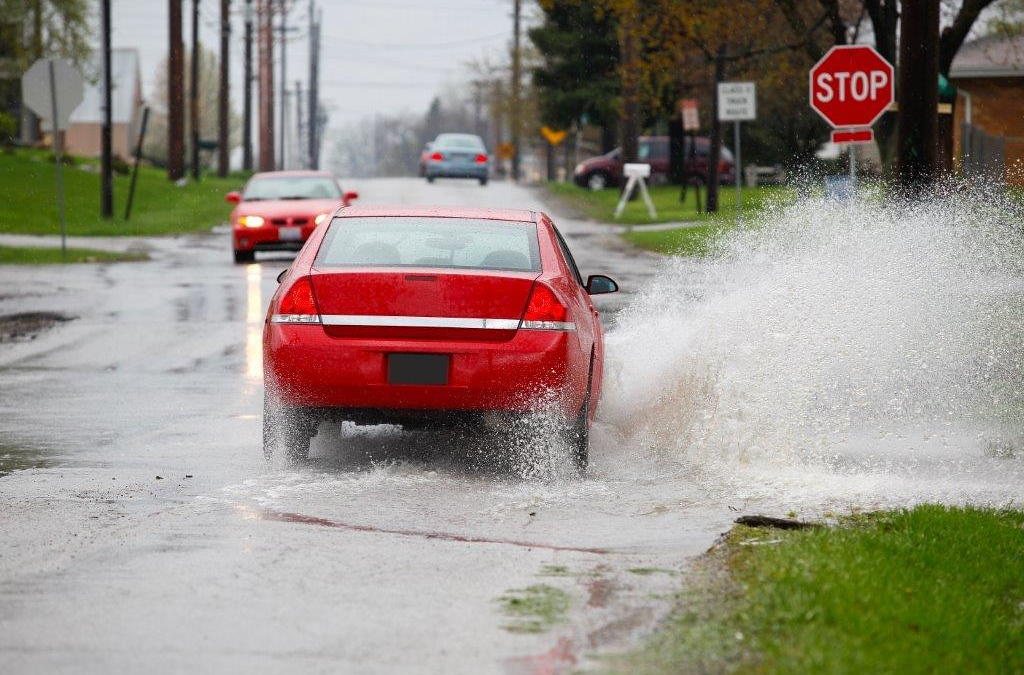Hydroplaning | Understanding and Avoiding a Wet Road Hazard
Hydroplaning, a common yet often misunderstood phenomenon, occurs when a vehicle’s tires lose contact with the road and glide on a layer of water. This can lead to loss of control, making it a perilous situation for any driver. Understanding hydroplaning and knowing how to prevent and react to it is crucial for safe driving, especially during wet weather conditions.
This blog may contain affiliate links, and therefore if you make a purchase through these links, we subsequently may or may not earn a commission at no extra cost to you.
What Causes Hydroplaning?
It happens when tires encounter more water than they can scatter or displace. This usually occurs at higher speeds in wet conditions, causing the tires to ride up on a film of water, losing contact with the road surface. Factors contributing to hydroplaning include:
Vehicle Speed: Higher speeds increase the risk of hydroplaning.
Tire Conditions: Worn tires with low tread depth are more prone to hydroplaning.
Water Depth: Even a thin layer of water can cause hydroplaning, especially if it accumulates quickly.
Road Conditions: Roads with poor drainage are more likely to have standing water.
Safety Tips
Maintain Your Tires
Regularly check your tire pressure and tread depth. Tires with adequate tread help channel water away, reducing the risk of hydroplaning.
Reduce Speed in Wet Conditions
The faster you drive, the harder it is for your tires to disperse water. Slowing down significantly decreases the likelihood of hydroplaning.
Avoid Puddles and Standing Water
Stay alert for any pooled water on the road, and try to avoid it if you can do so safely.
Follow in the Tracks of the Vehicle in Front
The vehicle ahead can displace water on the road, creating a drier path for your tires to follow.
Avoid Hard Braking and Sudden Turns
Sudden movements can trigger hydroplaning. Apply brakes gently, and avoid sharp or quick turns.
Drive in Lower Gear (if possible)
In vehicles with manual transmission or selectable gears, using a lower gear can increase vehicle stability and control.
What to Do If You Hydroplane
Despite precautions, you may still find yourself hydroplaning. Here’s how to handle it:
Stay Calm: Panic can lead to overreaction, worsening the situation.
Ease Off the Accelerator: Do not abruptly hit the brakes. Gently lifting your foot from the accelerator allows your car to slow down and regain traction.
Steer in the Direction You Want to Go: If the rear of your car begins to skid, gently steer in that direction. If the skid is severe, steering in the opposite direction can cause a spin.
Wait for the Car to Regain Traction: As the vehicle slows, it will naturally regain traction and control.
Hydroplaning
Hydroplaning can be a frightening experience, but understanding what causes it and how to prevent it goes a long way in enhancing safety on wet roads. Regular vehicle maintenance, especially tire care, and adapting your driving to weather conditions are key. Always remember, the best way to handle hydroplaning is to avoid it altogether through cautious driving. Stay safe and keep your wheels firmly on the road!
Drive with Confidence!
Keep up with all the latest driving news. Expolre our blog packed with essential tips and expert advice on all things related to DRIVING!




